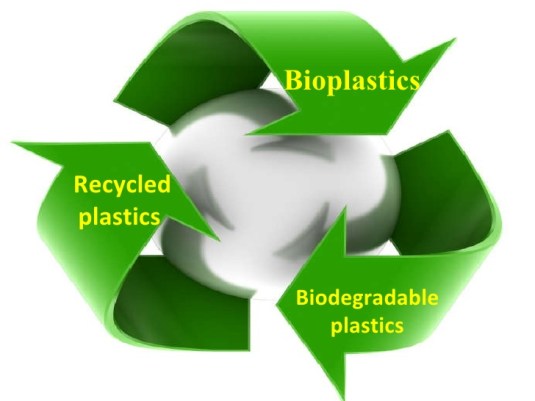By: Prof. Jaswant Singh( Member-Indian Scientific Expedition To Antarctica & Sr. Associate Editor-ICN Group)
Biodegradable plastics also have versatile applications such as plastic grocery bags, disposable containers, personal care products, agricultural plastics, medical devices etc.
Plastics have become a very important and essential commodity in the life of modern man because of its durability, strength, flexibility, light weight and low cost of production. Plastic in the environment has been regarded as more of an aesthetic nuisance since the material is biologically inert and nonbiodegradable.
More than 90% of the plastic material in municipal garbage consists of polyethylene, polyvinyl chloride, and polystyrene, in roughly equal proportions. These materials have molecular weights ranging from several thousand to 1,50,000 and appear to resist biodegradation indefinitely.
According to reports on plastic biodegradation involve, only the degradation of the plasticizers, the additive designed to render the plastic pliable and the polymer structures remains same i.e., no biodegradation of polymer takes place.
During the process of plastic biodegradation, the large molecules (polymers) are transformed into smaller, simple molecules (monomers) by the enzymes and acids that are naturally produced by microorganisms. Once the molecules are reduced to smaller size, the broken substances can be further absorbed by the organisms and metabolized for energy production and simpler inorganic compounds, carbon dioxide, methane, water etc.
Due to stringent environmental enforcement and opposition by the environmental groups especially in developed countries, manufacturers of plastics are searching for its alternatives.
Nonbiodegrability of plastics is one of the major concerns therefore; manufacturers have to overcome this problem by developing biodegradable plastic. Manufacturers have started selling new product, stamped “environmentally friendly” or “degradable.”
Biodegradable plastics also have versatile applications such as plastic grocery bags, disposable containers, personal care products, agricultural plastics, medical devices etc.
Many bacteria such as Alcaligenes eutrophus, Bacillus cereus and various pseudomonads produces truly biodegradable poly-β-hydroxyalkanoates, that can be used as biodegradable plastic.
The production of poly-β-hydroxyalkanoates can be enhanced by modifying the culture conditions and growth media, studies are going on to enhance the quality and yield of this product.
Some aliphatic polyester has attracted the attention of manufacturers of biodegradable plastics; however they have poor physical and mechanical properties. Aliphatic polyesters react with moisture at elevated temperatures and higher molecular weight polymer reduces to smaller hydrocarbon compounds.
The resulting smaller molecules can then be absorbed by microorganisms and metabolized for energy. Common biodegradable polyester polymers in commercial use include poly(caprolactone), poly (glycolic acid and poly (butylenes succinate).
The production of biodegradable plastic is right now expensive five to seven times higher over the petrochemical based polyethylene, more researches are needed to overcome this plastic problem.




